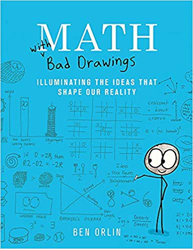MATLAB Guide, a New Edition
MATLAB Guide, a New Edition
Disclaimer: I read very few MATLAB books. I'm thinking you can guess why!
I recently got a copy of the latest edition of this book, MATLAB Guide, Third Edition, by Desmond and Nick Higham.

And I have enjoyed wandering through it. Des and Nick bring the clarity of their teaching to the book (or is it the other way around?). This is both a good reference book and introduction to MATLAB, though it doesn't replace (nor does it preclude) getting your hands on the keyboard and working problems out for yourself. They encourage you to get tapping away on your keyboard to get your own MATLAB experience.
The book's included topics span a large area of computing - e.g., matrices, linear algebra (of course!), numerical methods for solving ODEs, PDEs, and introducing people to object oriented programming towards the end. In fact, they introduce you to many topics that could be of interest, from sparse arrays to big data. In addition, the Highams also introduce a couple of important toolboxes: Symbolic Math, Parallel Computing.
In the book, I especially like the new Asides in gray boxes (that would be grey to many non-Americans) that give nice background material and reference for a wide variety of topics, from lambda calculus to reproducible research. The latter is, of course, an important topic for all technical people, though not always recognized as such.
Towards the end, the book includes the authors' list of the top 111 MATLAB functions. A useful lens, fun to go through, and it provided me with a chuckle. Because when I talk to people myself about the top N anything in MATLAB, I invariably end up introducing more like 2*N topics!
For those who want a solid book in the hand for teaching, learning or as a reference, with access to programs, links and resources, you just might want to check this one out.
- Category:
- Education,
- Reference
 Cleve’s Corner: Cleve Moler on Mathematics and Computing
Cleve’s Corner: Cleve Moler on Mathematics and Computing The MATLAB Blog
The MATLAB Blog Guy on Simulink
Guy on Simulink MATLAB Community
MATLAB Community Artificial Intelligence
Artificial Intelligence Developer Zone
Developer Zone Stuart’s MATLAB Videos
Stuart’s MATLAB Videos Behind the Headlines
Behind the Headlines File Exchange Pick of the Week
File Exchange Pick of the Week Hans on IoT
Hans on IoT Student Lounge
Student Lounge MATLAB ユーザーコミュニティー
MATLAB ユーザーコミュニティー Startups, Accelerators, & Entrepreneurs
Startups, Accelerators, & Entrepreneurs Autonomous Systems
Autonomous Systems Quantitative Finance
Quantitative Finance MATLAB Graphics and App Building
MATLAB Graphics and App Building








Comments
To leave a comment, please click here to sign in to your MathWorks Account or create a new one.